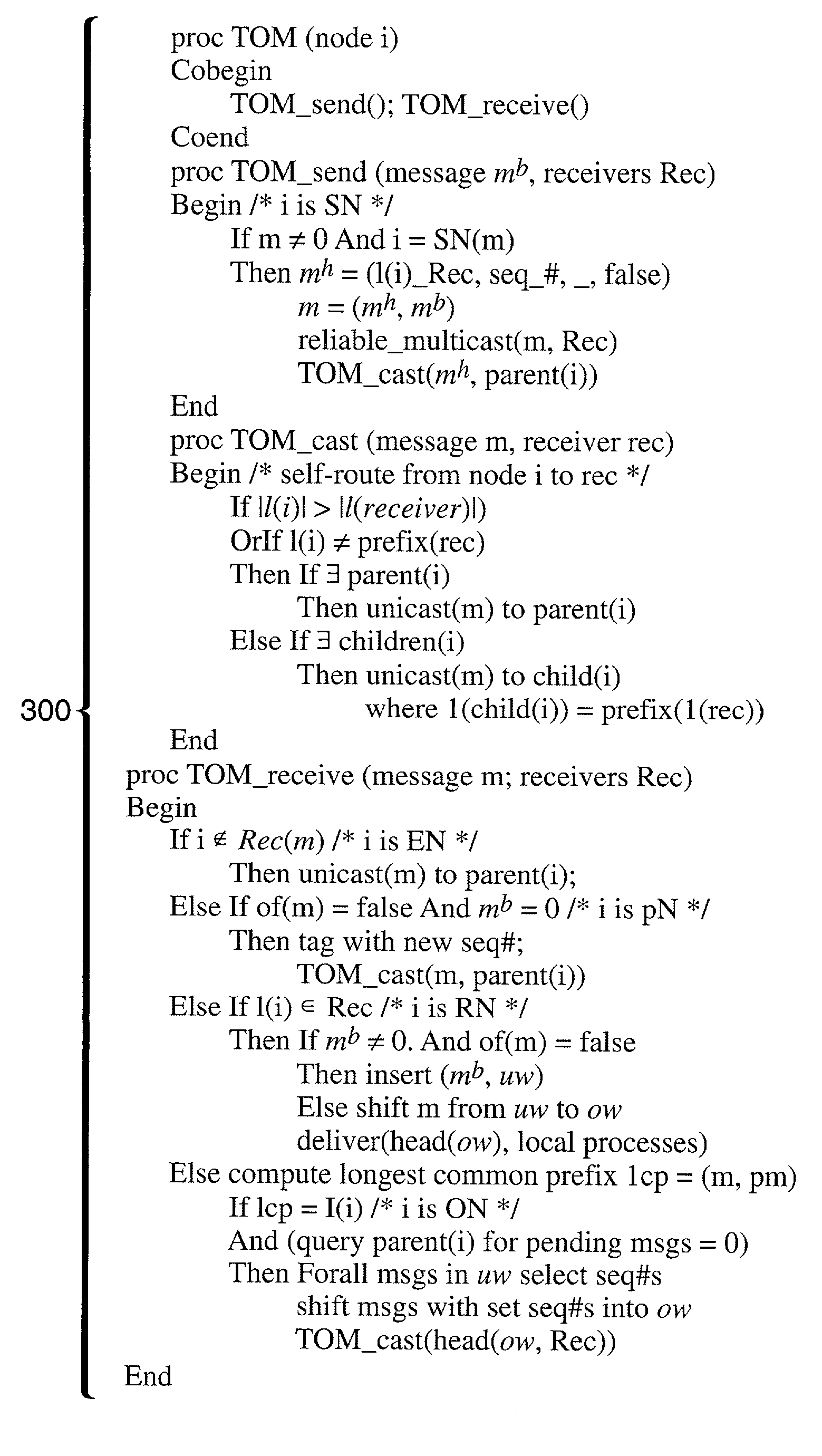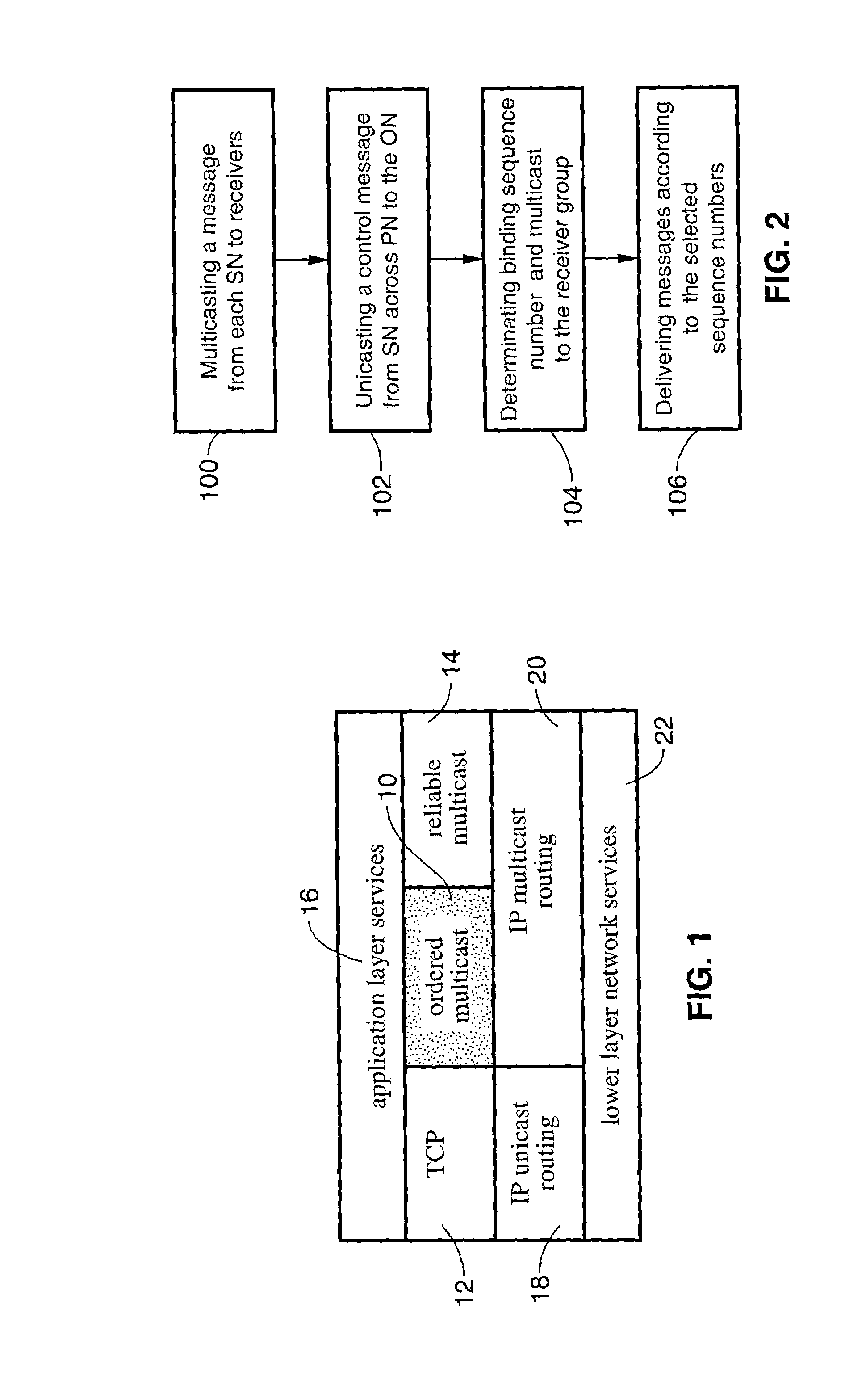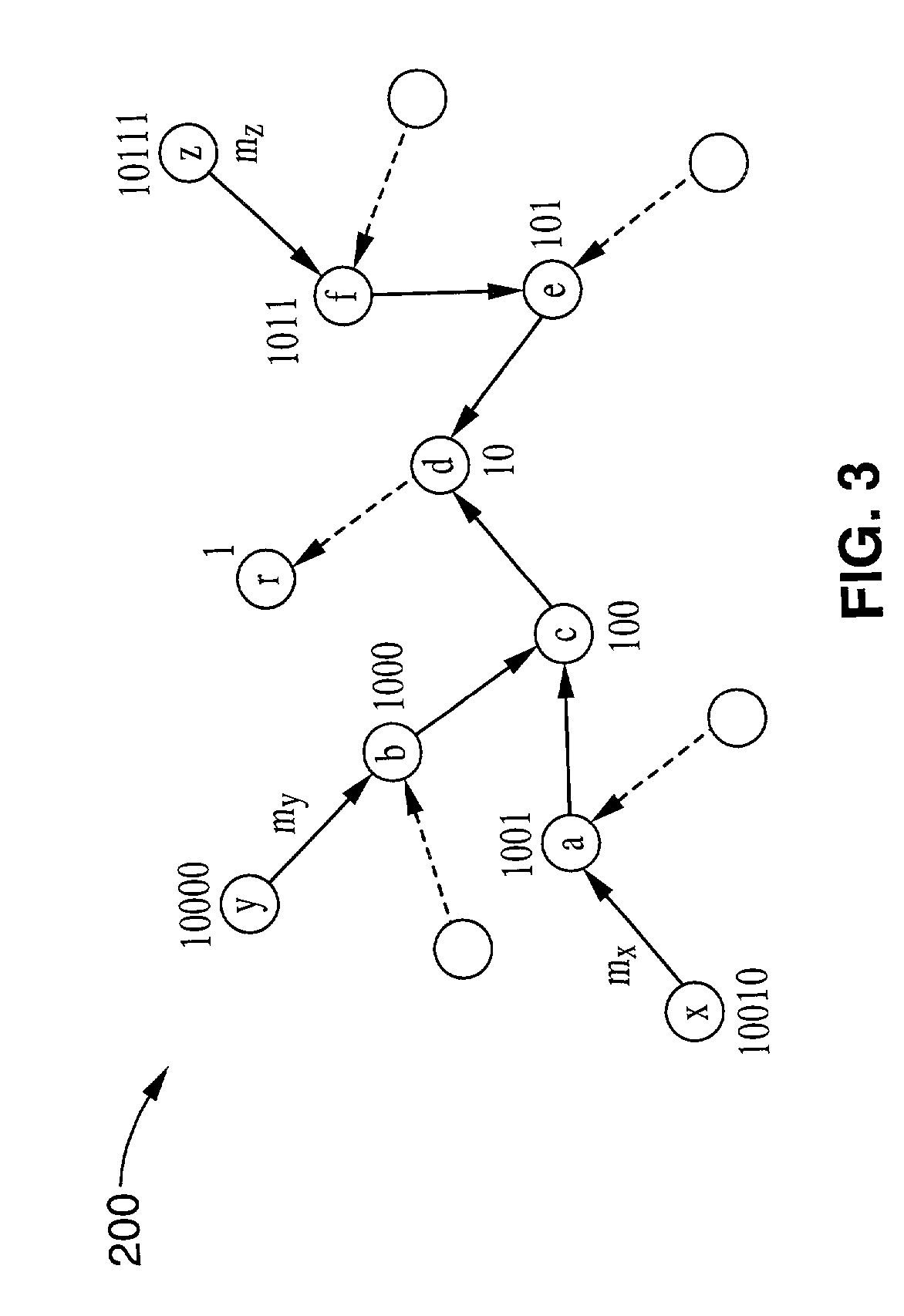Tree-based ordered multicasting method
- Summary
- Abstract
- Description
- Claims
- Application Information
AI Technical Summary
Benefits of technology
Problems solved by technology
Method used
Image
Examples
Embodiment Construction
[0030]For illustrative purposes the present invention will be described with reference to FIG. 1 through FIG. 6. It will be appreciated that the apparatus may vary as to configuration and as to details of the parts, and that the method may vary as to the specific steps and sequence, without departing from the basic concepts as disclosed herein.
1. Introduction
[0031]IP multicast communication generalizes the point-to-point and broadcast communication model to multipoint dissemination of messages. A source is required to transmit a single stream of packets to the network interface whereupon those packets are transparently replicated along their transmission paths to the receivers. This form of communication is indispensable for networked applications with high-volume data transfer, such as distributed software updates, news casts, video-on-demand, and interactive applications which include distributed simulations and telecollaboration systems. Data handled by these applications fall in...
PUM
 Login to View More
Login to View More Abstract
Description
Claims
Application Information
 Login to View More
Login to View More - R&D
- Intellectual Property
- Life Sciences
- Materials
- Tech Scout
- Unparalleled Data Quality
- Higher Quality Content
- 60% Fewer Hallucinations
Browse by: Latest US Patents, China's latest patents, Technical Efficacy Thesaurus, Application Domain, Technology Topic, Popular Technical Reports.
© 2025 PatSnap. All rights reserved.Legal|Privacy policy|Modern Slavery Act Transparency Statement|Sitemap|About US| Contact US: help@patsnap.com



